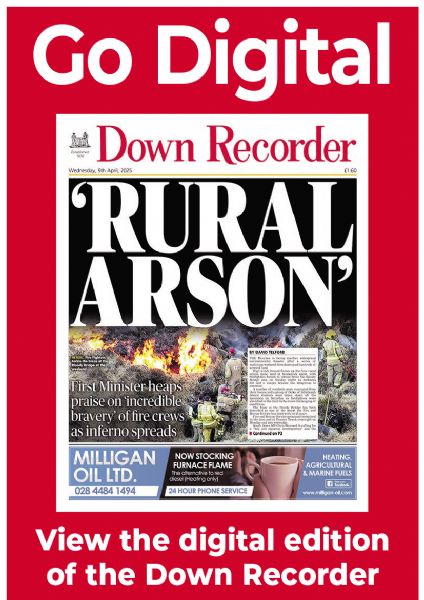Downpatrick wards will stay in South Down, but Saintfield is on the move
Downpatrick wards will stay in South Down, but Saintfield is on the move
23 November 2022
PROPOSALS to move a number of electoral wards in the Downpatrick area from the South Down Westminster constituency are to be abandoned under revised proposals published by the Boundary Commission.
Earlier this year, the Commission unveiled a controversial proposal to move the Cathedral, Knocknashinna and Lecale wards into a newly created constituency of Strangford and Quoile.
Under revised proposals — which the public is being asked to make comment on — the three wards are to remain in South Down, while the proposed creation of the new Strangford and Quoile constituency is to be axed under the revised proposals.
Strangford is to stay, but Saintfield and Moneyreagh will be moved into a new Belfast South and Mid Down constituency.
Proposals to move Ballynahinch, Crossgar, Drumaness and Kilmore into Strangford remain unchanged while the Quoile ward is to be split between South Down and Strangford.
Under the original Boundary Commission proposal, Malone Heights, Roughal Park, Ardenlee and Saul Acres developments and all of Saul and the Strangford Road in Downpatrick were to be moved into the proposed Strangford and Quoile constituency.
The revisions have been made by the Boundary Commission for Northern Ireland in light of public consultation responses that expressed concern about some of its initial proposals.
The independent commission is tasked with making alterations to the region’s 18 constituencies to reflect recent demographic changes and last week it announced the outcome of the second consultation process on its original proposals, with the decision to keep Downpatrick within South Down influenced by consultation responses highlighting concerns.
Reacting to the revised proposals, Strangford DUP MP Jim Shannon said that regardless of constituency boundaries, his party’s “clear focus and main priorities will continue to remain on making Northern Ireland work for everyone”.
He also said the Northern Ireland Protocol must be replaced with arrangements that Unionists can and will support.
“The proposed new boundaries for Strangford would bring about major change for both the constituency and in particular, people living in the Saintfield and Moneyreagh areas,” he said.
“While I would without a doubt welcome anyone coming into the constituency and would work hard along with my DUP colleagues for our new constituents, it would be disappointing to see these two areas move outside of the constituency.”
Mr Shannon described Moneyreagh as “an integral part” of the Strangford constituency for many years and has strong connections with Newtownards and the rest of the constituency.
“Similarly, it would seem strange to detach Saintfield from the rest of the Rowallane electoral area and cut its electoral ties with both Ballynahinch and Killyleagh, their normal hinterland,” the MP continued.
“I appreciate the job that the Boundary Commission must do and the constraints that they operate under, but it would be a very sad day to no longer be able to serve the people of Moneyreagh and Saintfield, to which it has been an absolute privilege.”
The commission has now launched its third and final consultation exercise on the revised proposals which ends on December 15, with the Commission submitting its final recommendations to the Speaker of the House of
Commons by July 2023, with the changes due to come into law in November 2023.
The new boundaries should be in effect for the UK’s next general election, unless a snap poll is called prior to November next year.
The deputy chairman of the BCNI, High Court judge Mr Justice Michael Humphreys, said: “Following two previous periods of consultation, the Commission has considered the representations made to it, and revised its initial proposals.
“The Commission is grateful to all those who made representations during the initial and secondary consultation periods.
“We encourage everyone with an interest to consider the revised proposals and share their views, whether to support the proposals, or to suggest alternatives which also take into account the requirements of the legislation.”
Written representations must be received by the commission by December 15 and can be submitted using the online portal, by email, or by post. These representations will be published online after the end of the third consultation stage.


